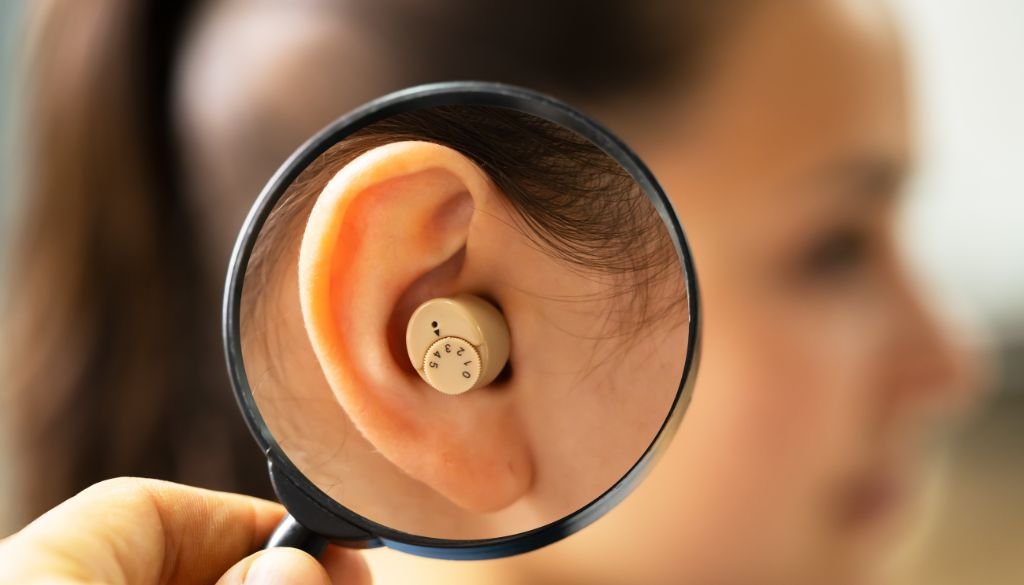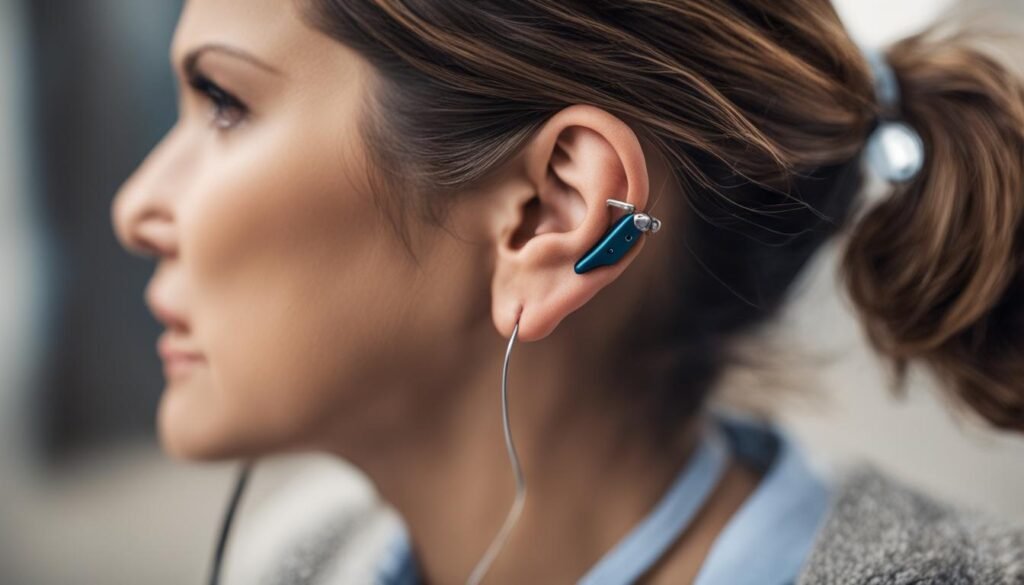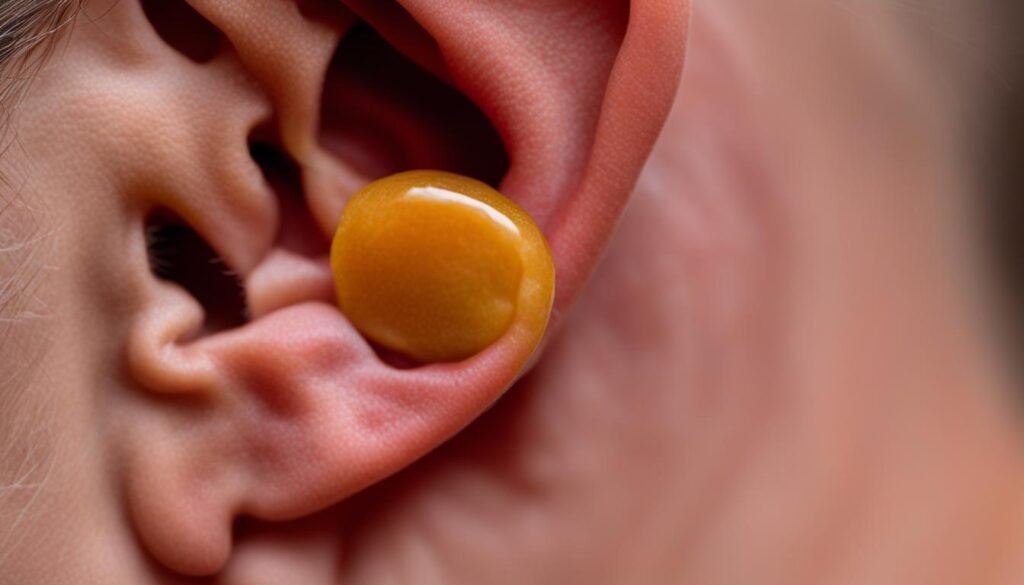Mastering How to Keep Hearing Aids from Falling Out of Ears is a significant concern for many adults who would benefit from hearing aids but hesitate due to the fear of losing them. This guide aims to alleviate such problems by providing practical and effective strategies to ensure your hearing aids remain securely in place. We understand that the risk of hearing aids falling out can deter regular use, impacting overall hearing quality.

Therefore, our comprehensive approach includes various tips and techniques designed to maintain the secure positioning of hearing aids, regardless of daily activities or movements. By implementing these methods, users can gain confidence in wearing their hearing aids consistently, ensuring they receive the full benefits of improved hearing without worrying about loss or damage.
Key Takeaways:
- Engage in activities that are less likely to dislodge hearing aids
- Consider using a lanyard to provide extra security
- Ensure proper insertion and positioning of hearing aids
- Regularly replace inserts for optimal fit
- Check for earwax build-up and take necessary measures
Consider Your Activities
Engaging in certain activities can increase the risk of hearing aids falling out. While it is essential to stay active and enjoy physical pursuits, it is recommended to remove hearing aids before participating in vigorous activities like workouts or sports. This precaution ensures the safety of the hearing aids while allowing the wearer to stay aware of their surroundings.
When exercising with hearing aids, it’s essential to find a balance between maintaining your hearing and keeping your aids secure. Strenuous movements, such as jumping or running, can cause the aids to dislodge from your ears. It is advisable to store them securely in a carrying case, such as a bag or locker, where they can still be easily accessed. This way, you can focus on your workout without worrying about your hearing aids.
By considering your activities and taking appropriate precautions, you can prevent hearing aids from falling out during physical pursuits and enjoy a worry-free experience.
Key Points:
- Remove hearing aids before participating in vigorous activities
- Store hearing aids securely in a carrying case
- Stay aware of your surroundings during exercise
- Find the right balance between maintaining your hearing and keeping your aids secure.
Get a Lanyard
One effective way to prevent hearing aids from falling out is to use a hearing aid lanyard. A lanyard is a cord with a clip that attaches the hearing aids to your clothing, providing extra security. By connecting the hearing aids to the lanyard, even if they accidentally dislodge from your ears, they will remain attached to you and are less likely to be lost or damaged.
Read Also: How to Insert a Hearing Aid into the Ear Canal Easily
The hearing aid lanyard is a convenient accessory, especially for individuals who lead an active lifestyle or participate in physical activities. Whether exercising, playing sports, or simply going about your daily routine, the lanyard ensures that your hearing aids stay securely in place, giving you peace of mind.
Benefits of Using a Hearing Aid Lanyard:
- It prevents hearing aids from falling out
- It provides additional security and peace of mind
- Convenient for individuals with an active lifestyle
- Ensures hearing aids remain easily accessible
- Reduces the risk of losing or damaging your hearing aids
“I’ve been using a hearing aid lanyard for the past year, and it has made a world of difference. I no longer worry about my hearing aids falling out during my daily walks or while playing sports. The lanyard keeps them securely attached to me, and I can focus on enjoying my activities without any concerns.” – Sarah, hearing aid user.
Investing in a hearing aid lanyard is a simple step to enhance the security and stability of your hearing aids. With the lanyard, you can confidently go about your daily activities, knowing that your hearing aids are less likely to fall out or get lost. Consult your hearing care professional to find a lanyard compatible with your specific hearing aid model.
How to apply Vicks for tinnitus? Discover the steps of ‘how to apply Vicks for tinnitus’ in our detailed exploration, providing a step-by-step guide and discussing its potential effectiveness.
Ensure They’re in Right
Proper insertion and fitting of hearing aids are essential for preventing them from falling out due to improper placement. When inserting your hearing aids, it’s necessary to ensure that you are placing the correct device in the corresponding ear. This provides optimal functionality and comfort.
For smaller hearing aid models, it is recommended to position them flush with the ear canal. This snug fit helps improve stability and prevents them from easily dislodging. On the other hand, larger hearing aid models should be positioned against the earlobe for a secure fit.

Remember, proper insertion not only ensures the hearing aids stay in place but also enhances their performance. If you need clarification on the correct insertion technique or fit, consult your hearing healthcare professional for guidance and assistance. They can provide personalized advice based on your needs and help you achieve a comfortable and secure fit.
Tips for Proper Insertion and Fit:
- Double-check that you are putting the correct hearing aid in the corresponding ear.
- For smaller models, position the hearing aid flush with the ear canal.
- Place the device against the earlobe for a secure fit for larger models.
- If you need clarification, consult a hearing healthcare professional for personalized guidance.
Replace Your Inserts
Hearing aid inserts play a critical role in ensuring the secure fit and proper functioning of your hearing aids. It’s essential to know when to replace them and how to ensure the appropriate sizing for optimal performance.
Over time, foam tips and silicone inserts can wear out, affecting their ability to stay securely in your ears. It is recommended to replace foam tips every two to three weeks and silicone inserts every four to six months. Regular replacement ensures the inserts maintain their shape and provide the necessary stability for your hearing aids.
Proper sizing is also crucial for a secure fit. Too large inserts may not go into the ear, causing instability and the risk of falling out. On the other hand, inserts that are too small may not stay in place. When selecting replacement inserts, ensure they are the correct size for your specific hearing aids.
Consult with your audiologist or hearing specialist to determine the correct type of inserts and get guidance on proper sizing. They can help you find the inserts that best suit your needs and ensure that your hearing aids fit comfortably and securely in your ears.
Check for Earwax
Earwax build-up can significantly impact the fit and functionality of your hearing aids. It can cause the devices to become dislodged or even fall out of your ears, compromising their effectiveness. That’s why it’s essential to regularly check for earwax build-up and take appropriate measures to remove it.
To safely and effectively address earwax build-up, use over-the-counter eardrops formulated explicitly for removing cerumen. These drops can help soften the wax, making it easier to remove. Follow the instructions provided with the eardrops and consult with a healthcare professional if you have any concerns.

For more stubborn earwax build-up or if you’re unsure about removing it yourself, it’s best to seek assistance from an audiologist or a hearing specialist. They have the expertise and specialized tools to safely remove earwax without causing any damage to your ears or hearing aids. Keeping your ears clean and free from excessive earwax can prevent hearing aids from falling out and ensure optimal performance.
Use Hearing Aid Accessories
When it comes to keeping your hearing aids secure during activities, using hearing aid accessories can make a significant difference. These accessories provide an extra support layer and ensure your hearing aids stay in place, even during movement.
One of the popular accessories is a clip, which attaches to your clothing and keeps the hearing aids securely attached to your body. This is especially helpful during physical activities or exercise when the risk of hearing aids falling out is higher. Another option is a headband or strap that wraps around your head and helps keep the hearing aids in place.
“Using hearing aid accessories such as clips, headbands, or straps can provide added security and prevent your hearing aids from falling out during exercise or other activities.” – Dr. Sarah Thompson, Audiologist.
These accessories provide peace of mind and allow you to engage in various activities without worrying about the hearing aids getting dislodged or lost. These accessories will enable you to confidently enjoy your favorite physical activities while keeping your hearing aids secure.
Key Points:
- Utilize clips, headbands, or straps designed for hearing aids to secure them during activities.
- These accessories provide an extra support layer and prevent hearing aids from falling out.
- Enjoy peace of mind and engage in physical activities without worrying about losing your hearing aids.
Conclusion
Ensuring the security of your hearing aids is crucial to prevent them from falling out and to maintain a worry-free experience. By implementing a few practical tips and strategies, you can keep your hearing aids securely in place throughout the day.
Consider your activities and remove your hearing aids before engaging in vigorous exercises or any action that may increase the risk of them falling out. Use a carrying case or a convenient storage option to keep your hearing aids safe while participating in these activities.
Find out: What is the average payout for hearing loss
Investing in a hearing aid lanyard can provide an additional layer of security. Attach the lanyard to your clothing, which will help prevent your hearing aids from getting lost or damaged if they accidentally fall out of your ears.
Ensure that your hearing aids are inserted correctly and flush with your ear canal or earlobe. This proper placement contributes to a secure fit and stability. Regularly replace your inserts to ensure optimal sizing and a snug fit for your hearing aids.
Regularly check for earwax build-up, as it can interfere with the proper fit and functioning of your hearing aids. Taking appropriate measures to remove the earwax will help prevent your hearing aids from dislodging or falling out.
Consider using hearing aid accessories such as clips, headbands, or straps designed to secure your hearing aids during physical activities or exercise. These accessories provide an extra support layer and ensure your hearing aids stay firmly in place, even during movement.
Following these simple tips and implementing these strategies can significantly reduce the risk of your hearing aids falling out. Take proactive measures to enhance the security and stability of your hearing aids, and enjoy a comfortable and worry-free experience throughout your day.
Frequently Asked Question
How can I keep my hearing aids from falling out of my ears?
To keep hearing aids secure in your ears, try the following tips and strategies:
What should I do during vigorous activities like exercise?
It is recommended to remove your hearing aids before participating in vigorous activities like workouts. Store them securely in a carrying case, such as a bag or locker, where they can still be easily accessed.
How can a lanyard help keep my hearing aids secure?
Using a hearing aid lanyard can provide additional security. A lanyard is a cord with a clip that attaches the hearing aids to your clothing. This way, even if the hearing aids accidentally fall out of your ears, they will remain attached to you and are less likely to be lost or damaged.
How can I ensure the proper insertion of my hearing aids?
Proper insertion of hearing aids is crucial to prevent them from falling out. Ensure that the correct hearing aid is placed in the corresponding ear and position the hearing aids flush with the ear canal for smaller models or the earlobe for larger models. This proper placement helps improve the fit and stability of the hearing aids in your ears.
How often should I replace my hearing aid inserts?
It is important to regularly replace foam tips every two to three weeks and silicone tips every four to six months to ensure the optimal fit and functionality of your hearing aids.
How can earwax affect the fit of my hearing aids?
Earwax build-up can interfere with the proper fit and functioning of hearing aids. It can cause the hearing aids to dislodge or fall out of the ears. Regularly check for earwax build-up and take appropriate measures to remove it, such as using over-the-counter eardrops or seeking professional assistance from an audiologist or hearing specialist for safe and effective earwax removal.
Are there any accessories that can help secure my hearing aids?
Yes, various accessories can be utilized to enhance the stability and security of hearing aids. Clips, headbands, or straps specifically designed for hearing aids can help prevent them from falling out, especially during physical activities or exercise. These accessories provide an extra support layer and ensure hearing aids stay in place even during movement.
What are some general tips for keeping my hearing aids in place?
By considering your activities, using a lanyard, ensuring proper insertion and sizing, checking for earwax, and utilizing accessories, you can enhance the security and stability of your hearing aids, significantly reducing the risk of them falling out. These simple tips can improve your overall experience of wearing hearing aids.



